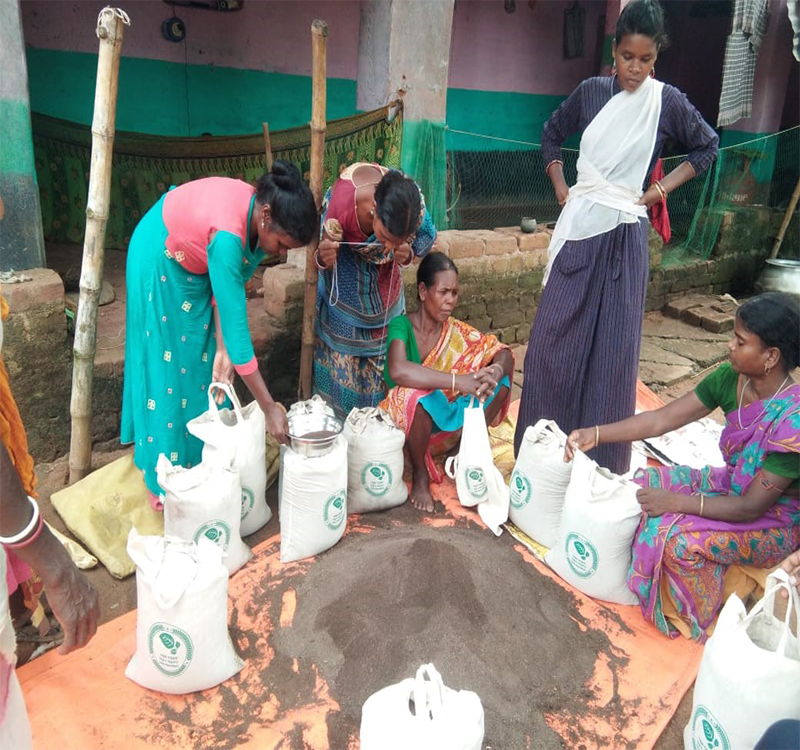Standard Operating Procedure
Stages and Steps for implementation of Sustainable Livelihood Development Project
Concept: Why Integrated
Integrated landscape Management approaches includes identification of the degrading landscape where the community face resources crunch and problem of livelihood.
The method also includes the development of strategy for the effective ways of building the capacity of the community to enable them to understand the concept of the ecosystem of the landscape and the interdependent relationship among the forest, water bodies, agriculture land, livestock to prepare a consolidated micro plan for conservation-based livelihood through their participation.
IBRAD conducts situation analysis, create awareness, identify proactive leaders, development of training modules for building the capacity of the village entrepreneurs in particular to enable them to understand the stages and steps of livelihood related activities. Some of the activities are development of Sabji bagan, Vericompost, fishery, nursey, agro forestry, horticulture, organic farming etc.
Identification of Landscape is done based on the vulnerability and drivers of degardation through stakeholder consultation, secondary data and consultation of Google Map.
-
Stage-I Inception meetings with Government and Panchayat functionaries
- Stage I. Step (1) State level Inception Meeting
State level Inception Meeting with the line departments to share the concept, methods and approaches and prepare the road map.
- Stage I. Step (2) District Level Inception Meeting
Inception meetings or Workshops at the District level with the Tribal Development, Forests, Agriculture and other line departments to discuss about the objective of the project, concepts and approaches of IBRAD to get the response from the government functionaries and also getting their help in identification of landscape, generally degraded tribal habitat (district level functionaries of the tribal development and other line departments, district heads, research institutions)
- Stage I Step (3) Block Level Inception Meeting
Block level inception meeting or workshop with the panchayat representatives and the line department officials to finalise the plan of actions.
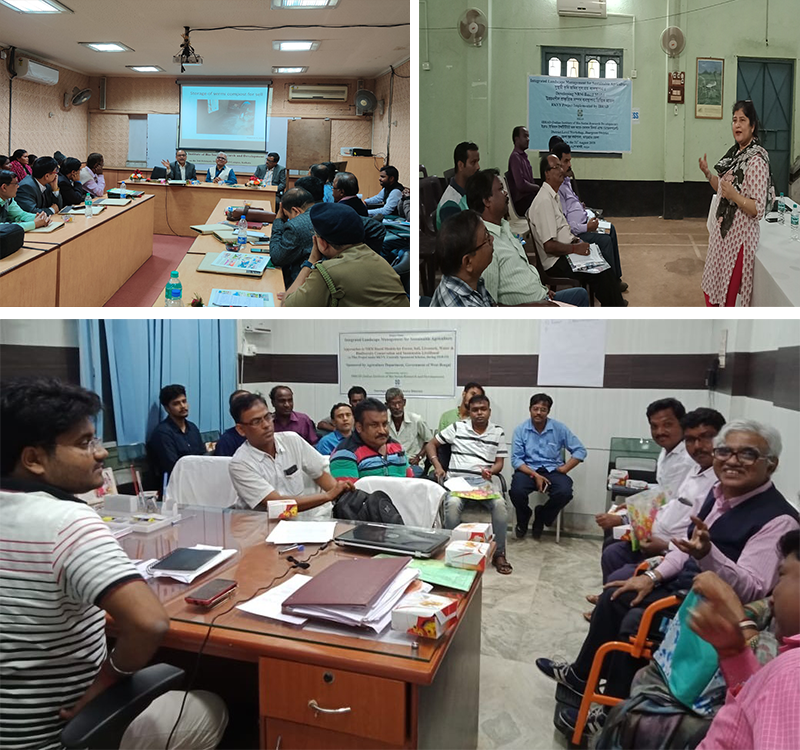
-
Stage II Awareness – Eco Chain – PANCHATATWA
- Stage II. Step (1) AWARENESS at the community level – PANCHATATWA
Creating awareness Without Giving Any Advice….by asking questions following the methods and steps of PANCHATATWA and Identification of SICO (Proactive Change Agents).
During the PANCHATATWA exercise five pictures of Forest, Water, Agri field, Livestock and Human are drawn on the top of a chart paper and the four questions are asked..1. out of the five components which one is not needed at the village
2. why all are needed
3. How they are interdependent and how the villagers can come forward to conserve them. Villagers were divided into groups and write the answers through group discussions, Each group then present their answers and the best presentation is rewarded.
This is the first level of interventions at the landscape level to create awareness and sensitize the villagers to come forward as proactive members for implementation of the project at the village level.
Instead of making the community as passive recipient of the project benefits this method helps the community to take charge of the development of their village as active partners of the project.
Through PANCHATATWA exercise villagers start linking their survival with the constituent ecosystems of their landscape and some proactive members from among the villagers, known as Self Initiated Community Organiser (SICO)- Stage II. Step (2) Identification of Proactive Community leaders – SICO as the change agents
Through PANCHATATWA exercise some of the proactive change agents (SICO) will be identified. They will be the front line extension volunteers to transfer the information, key messages and technologies from the project to the villagers. Some of the SICO with good communication skills and leadership qualities will be groomed and trained as CRP (Community Resource Persons).
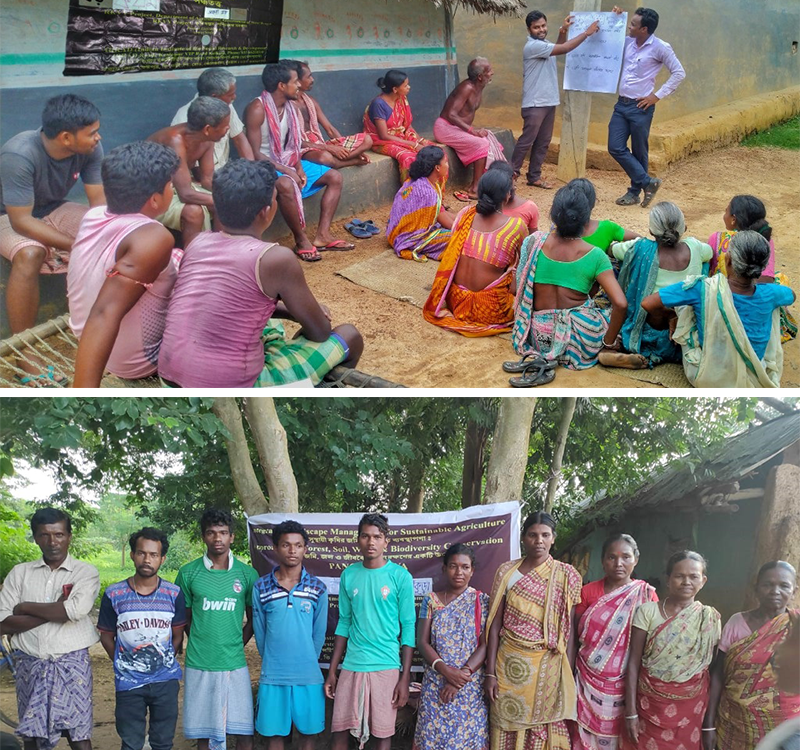
-
Stage III. SAPTAPADI – Community Institution Building
Here, immediately after identification of the SICO some groups may be formed in the form of a local club or a SANSTHA – community institution. This group of may be four or five will have a name, their own plan of activities depending upon their immediate need and interest. We call it CIG (Common Interest Group). In the same village there may be four or five CIG. Each CIG will have a coordinator of their own. The CIG will have their own rules and regulations and control mechanism to maintain discipline of their sabji bagan or any activity with a mention for organising periodical meetings. IBRAD team will provide three (3) registers. The first register will be for discussion of business development plan related to livelihood and plan of actions. The second register will be a kind of register with document of rules, regulations and resolutions. The third register will be used as the cash book. Immediately after formation of CIG the resolution will be drafted and signed by the members in a hard bound register
There will be a village level Project Assistant who will conduct training repeatedly..repeatedly..repeatedly for maintaining the rules and registers of the CIGs and will monitor all the CIGs.
The IBRAD project staff has to conduct training on how to write about plan of action, resolutions, and maintaining the cash book.
CONCURRENTLY SOIL PREPARATION FOR FEW NUTRITION GARDEN (sabji bagan) MAY BE INITIATED TO INVOLVE THE COMMUNITY IN SOME PHYSICAL ACTIVITIES TO DEMONSTRATE INITIATION OF PROJECT ACTIVITIS.
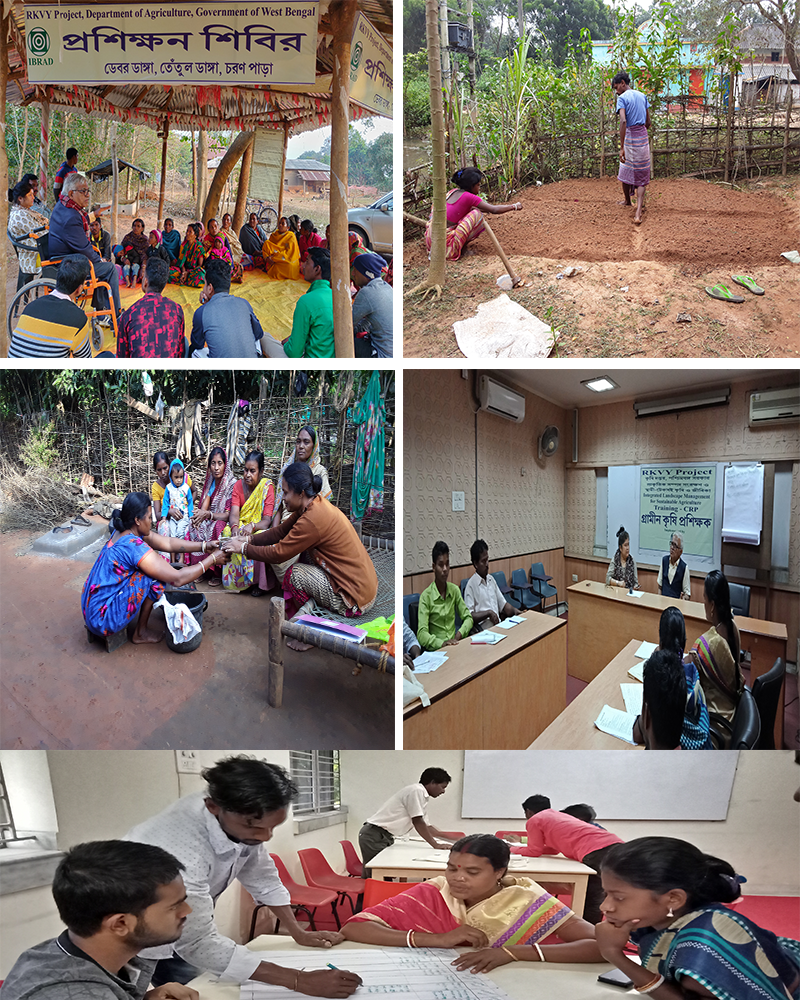
-
Stage IV Participatory planning – PRA and Microplanning
PRA map and basic plan based on the land available for nutrition garden, and plant nursery keeping in mind source of water for irrigation, vermicompost pit, identify waterbodies for fishery, scope for rainwater harvesting and pond following the flow of water collected in or around village. Identify land for agroforestry and community orchard. Establishment of Herbal Garden. Discuss about annual crop calendar and activities based on the seasonal calendar. Involve women and children in identification of local issues related to availability of food, problem of water and sanitation, which directly or indirectly affect the health of the community.
- Stage IV Step (1) PRA Exercise at village level
PRA exercise is conducted at the village level by involving the CIG members. The participatory approaches and tools are designed to encourage participatory decision making by involving the primary stakeholders, i.e., the community members.
Minimum three PRA maps, namely Village Spatial Map, Village Resource Map and Seasonal Calendar are to be prepared.
- Stage IV Step (2) Separate note on Health
Prepare a separate note and chart paper related to seasonal health issues and possible solutions. Identify some women who will be responsible to organize periodical focus group discussion related to health.
- Stage IV Step (3) Separate note on NTFP
Prepare a separate note and chart paper related to month wise availability of NTFPs and their use. Note Rare and endangered species available in the area. Identify the villagers who are mostly dependent on the NTFPS for livelihood.
- Stage IV Step (4) Separate note on Rare seed and foods
Prepare a separate note and chart paper related to rare seeds and foods in the village, their present status and use. Identify women who will develop seed banks.
- Stage IV Step (5) SWOT Analysis
SWOT (Strength, Weakness, Opportunity and Threat) analysis is one of the essential tools for participatory planning and interventions.
Villagers in the group meeting are asked to illustrate about some points or activities or some of the resources which are found only in this village for which the villagers are proud of it. Same way, they are asked what kind of weakness villagers appreciate and that they wish to overcome for the overall development of the village.
The third question is asked about who can help to overcome the weakness, what are the opportunities, they have before them that can help the village.
Finally, they are asked to measure the consequences that villagers are going to face if they do not act now.
It helps in having insights about the local situation that helps in designing the strategic planning and interventions. Through SWOT analysis method was originally developed in the context of business and industry but it has been proved to be equally useful for community-level developmental works as well.
- Stage IV Step (6) Participatory Household Survey
Conduct household survey involving the community members.
- Stage IV Step (7) Microplanning
Stage IV Step (7.1) Understanding the conditions of different eco systems within the landscape and the drivers of degradation.
The exercise helps in understanding the conditions of different eco systems within the landscape, their inter dependence and the drivers of degradation
Stage IV Step (7.2) Refer the PRA map, SWOT report and Household survey report for preparation of village level plan. Discuss with the CIG members again displaying the maps and identify the potential activities and locations.
Stage IV Step (7.3) Preparation of budget and action plans. Activity wise budgets, activity scheduling and action plans are prepared by involving the villagers. Plan for convergence with different line departments are made.
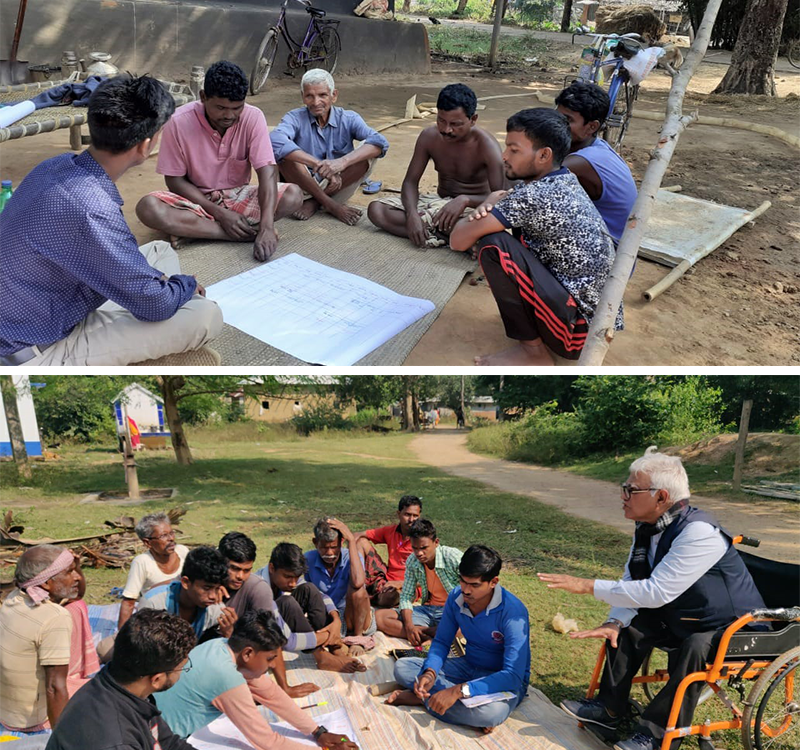
-
STAGE V. PRASHIKSHAN SHIBIR as an outreach centre
Prashikshan Shibir as Community Supported and Managed Training hut is established for Continuous Learning Forum.
The Prashikshan Shibir, a semi permanent hexagonal structure built following the tribal culture is built in a central/prominent location in the village. It serves as Outreach programme for NRM based Organic Farming and will be centre of Pride and identity of the farmers. It will have yearlong plan for continuous learning programme.
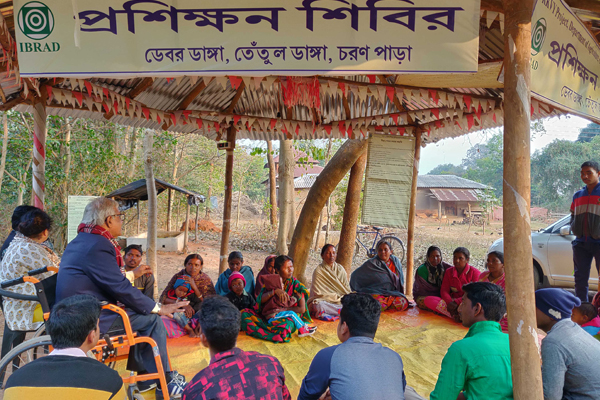
-
Stage VI Community Training – Trait Based Training – Involve proactive women
- Stage VI Step (1) Preparation of IEC materials and hand outs
Preparation of IEC materials through community participation and brainstorming and it is to be displayed.
Series of quiz contest, essay writing and debate, songs and dances will be organized to reinforce the issue of conservation and livelihood.
Preparation of hand outs for (i) Nutrition Garden (Sabji Bagan), (ii) Vermicompost, (iii) Neemastra, (iv) Amrit Jal.
Some posters to be printed for display in the Prashikshan Shivir.- Stage VI Step (2) Preparation of Training Modules, Materials on
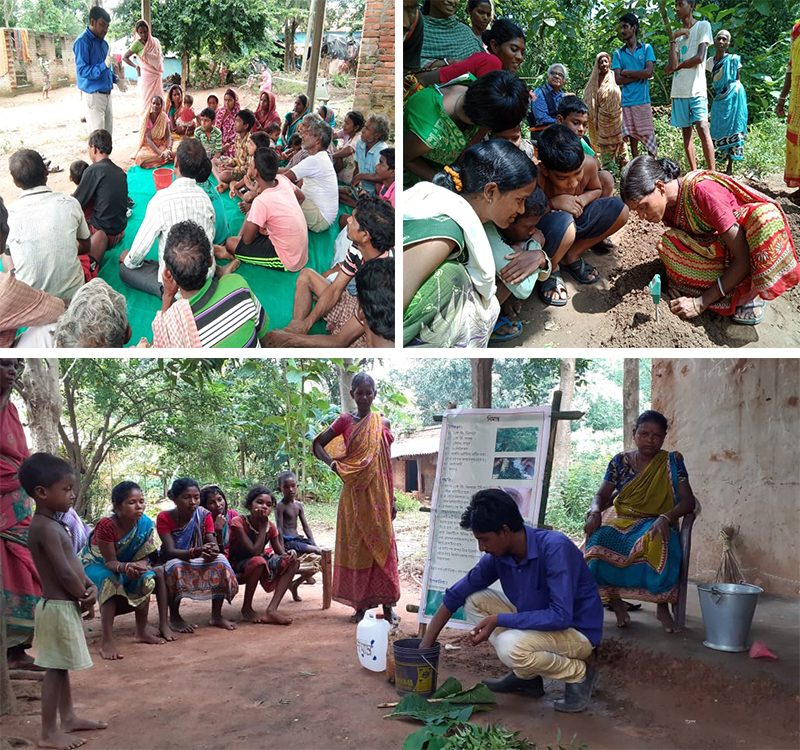
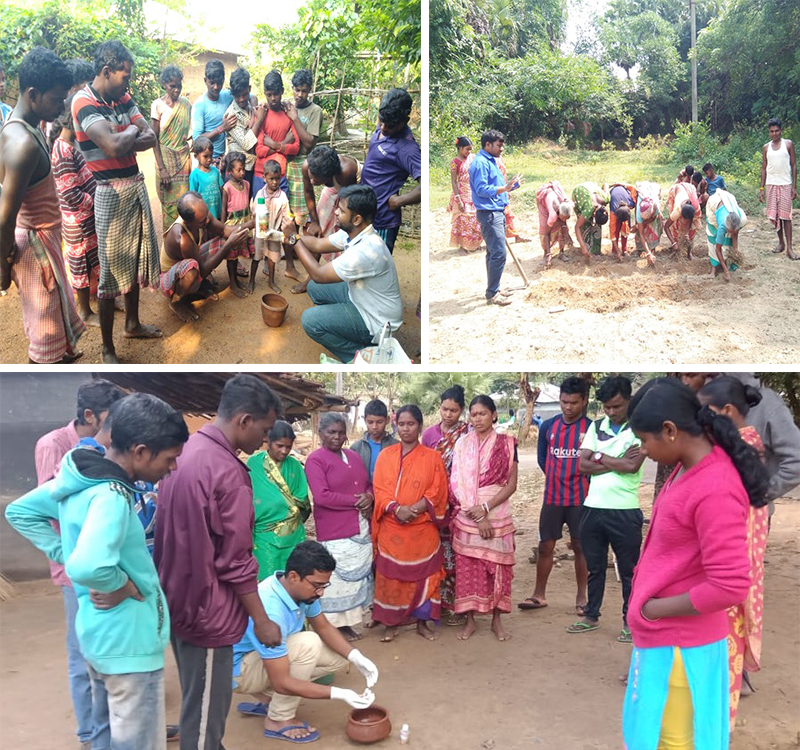
Nutrition Garden
Land preparation
Seed Treatment
Neemastra Preparation
Amrit Jal preparation
Vermi composting
Nursery raising
Agro Forestry
Herbal Garden
Pisci culture
NTFP processing- Stage VI Step (3) Implementation of the skills learnt in the field on project mode
The trainings are conducted on modular basis. After each module the participant implements the skills learnt in the field.
- Stage VI Step (4) Exposure Visits – Some tour can be organized to take the participants at some places where good model of livelihood has been established by some other agencies. Such visit will motivate the participants and will inspire to learn and adopt new technologies and grow as entrepreneurs.
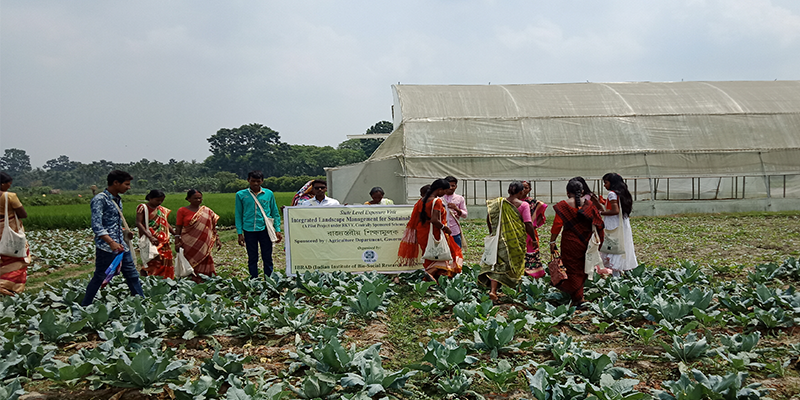
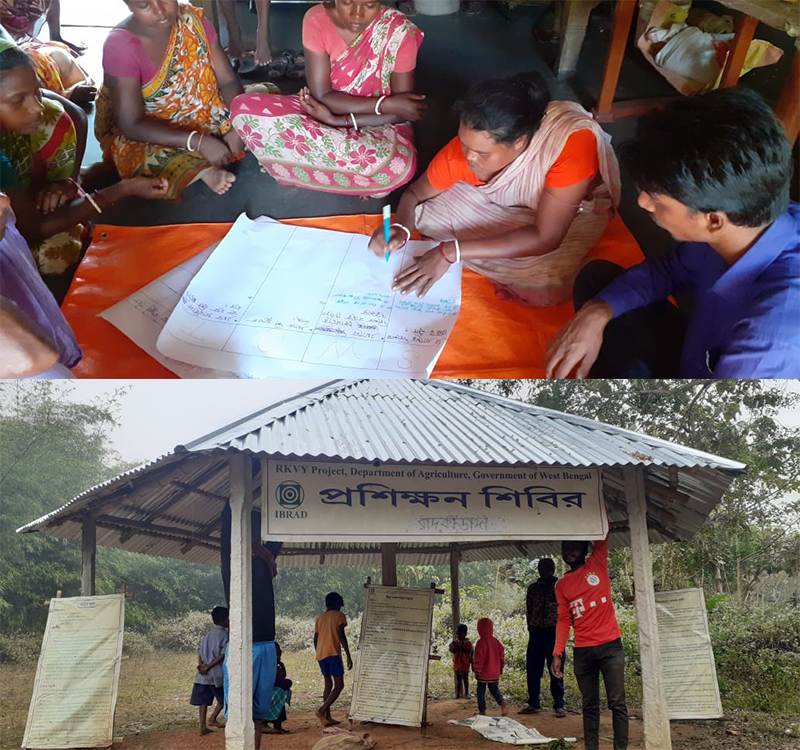
-
Stage VII. Community Resource Person (CRP) Training and Training of Trainers
- Stage VII Step (1) Training Plan and Conduction of training
Rigorous and repeated trainings are organised for the CRP members for improving the livelihood base through improvement of soil health, water conservation, seed treatment, production of inputs like bio fertilizers and bio pesticides, livestock management, plant protection methods, nursery techniques, pisciculture, preparation of business development plan, branding and marketing of products etc.
- Stage VII Step (2) Training to CIG members by the CRP
The CRPs in turn train the CIG members on the specific skills and facilitate the process of transfer of technology. To begin with some basic trainings will be provided that will help the farmers to increase income through improved food production, plant protection and production of agri inputs such as
1. Organic method of seed treatment
2. Sabji bagan preparation
3. Vermi compost preparation
4. Neemastra preparation
5. Amrit Jal preparation
-
Stage VIII. Training on women empowerment
- Stage VIII Step (1) Training Plan, training module and material preparation for specialized training on Agribusiness for women empowerment
Specialised certificate course of one month duration (200 hours) for women empowerment on Agri – Business is designed to develop skills for promoting Agri – business. The training is divided into three slots and maximum upto 15 persons are trained in one batch
The objective of such course is to create empowered women entrepreneurs at the grass root level, para Agri Resource Person for ease of access to agri advisory services like IPNM; agronomy; seed rate and seed treatment; timing for fertigation and irrigation; tips for improved productivity and quality of produce; harvesting and post harvesting management
- Stage VIII Step (2) Training for the women
Conduct specialized training for the women at the Prashikshan Shivir through digital and off line mode. Formation of women CIG, preparation of business plan and start of business.
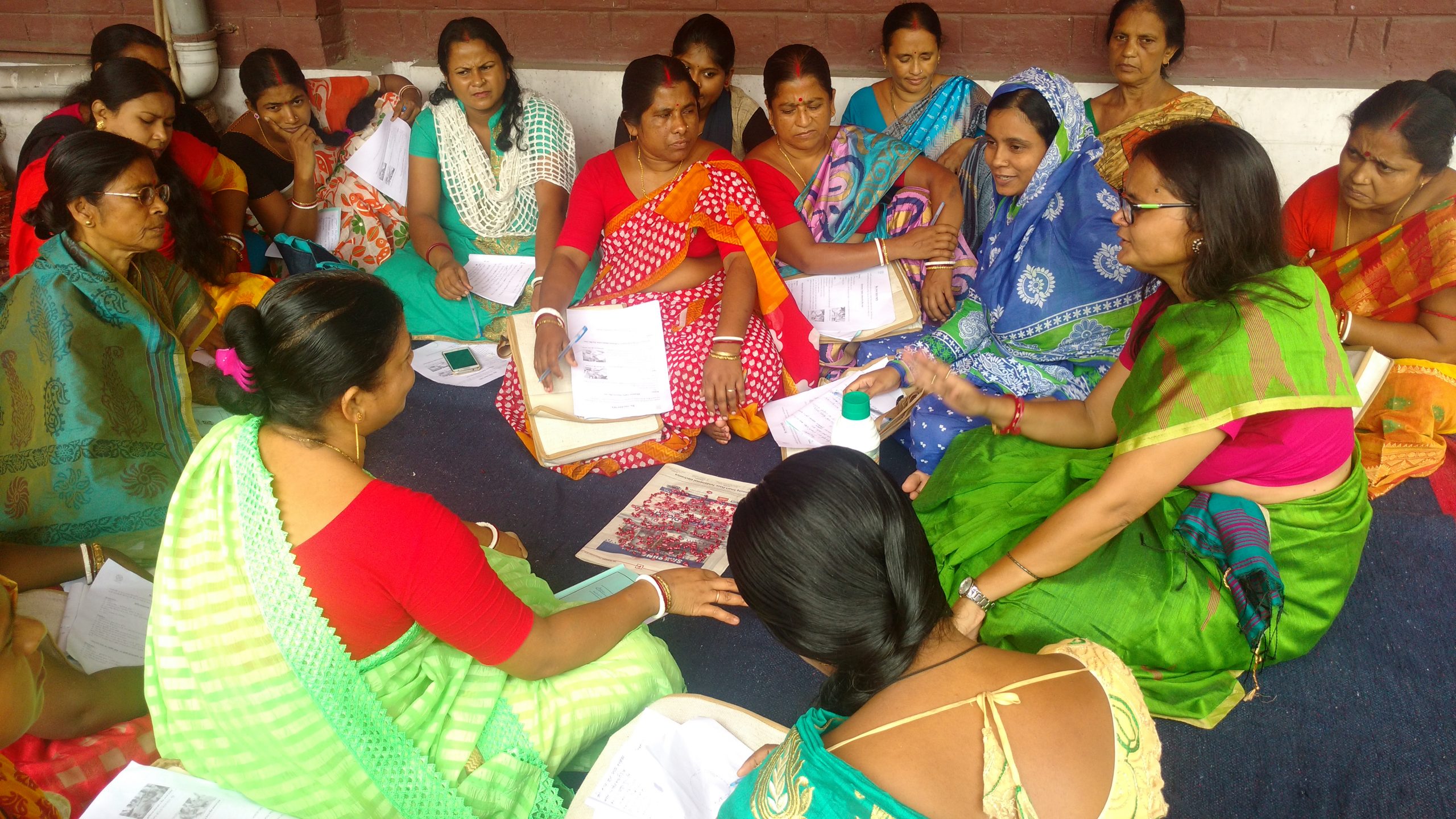
-
Stage IX. Establishment of Demonstration Centres (DC)/trial plots
A demonstration or trial plot is used primarily to research or demonstrate various agricultural techniques including crops, different agriculture technologies and livestock. It becomes a central point for dissemination of new technologies and package of practices. Demonstration Centres/trial plots are used extensively for conducting Farmers Field School (FFS) for knowledge and skill transfer.
- Stage IX Step (1) Identification of Land and the lead farmers for demonstration of specified products/package of practices
Identification of the lands and the lead farmers near the Prashikshan Shibir to establish the Demonstration centres. These DCs are used for demonstration during the in situ trainings of the CIGs.
- Stage IX Step (2) Establishment of Demonstration plots near Prashikshan Shibir
Demonstration plots on Sabji Bagan, Vermi Compost, Nursery would be established near the Prashikshan Shibir. These centres are used for multiple season demonstration. The demonstration centres are established by the single farmers and the farmer groups.
- Stage IX Step (3) Plan and execution of seasonal demonstration following the crop calendars
Demonstration of seasonal crops are planned prior to the commencement of the season and the demonstrations are done accordingly.
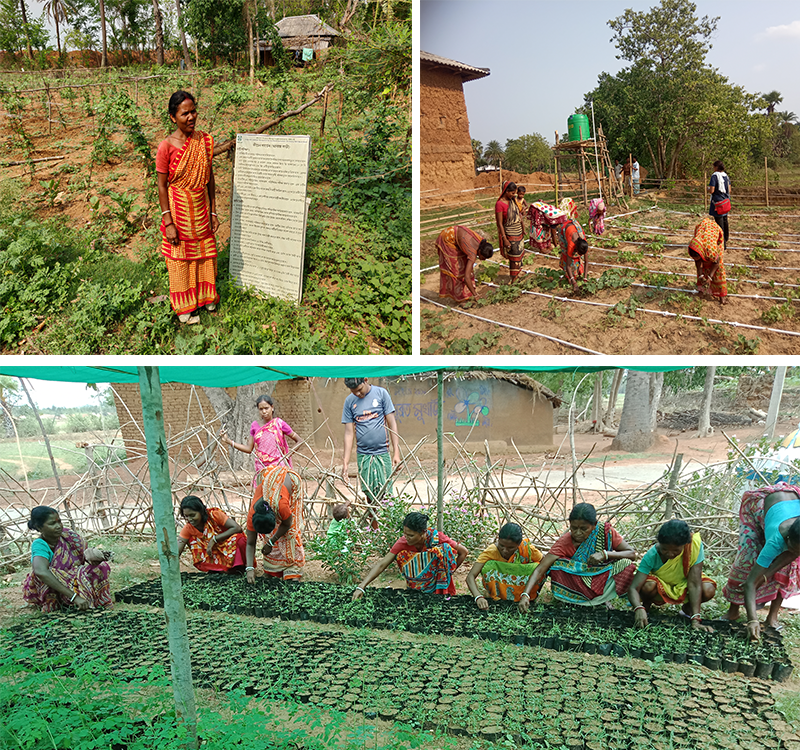
-
Stage X Branding and Marketing for Commercial Production, if any
